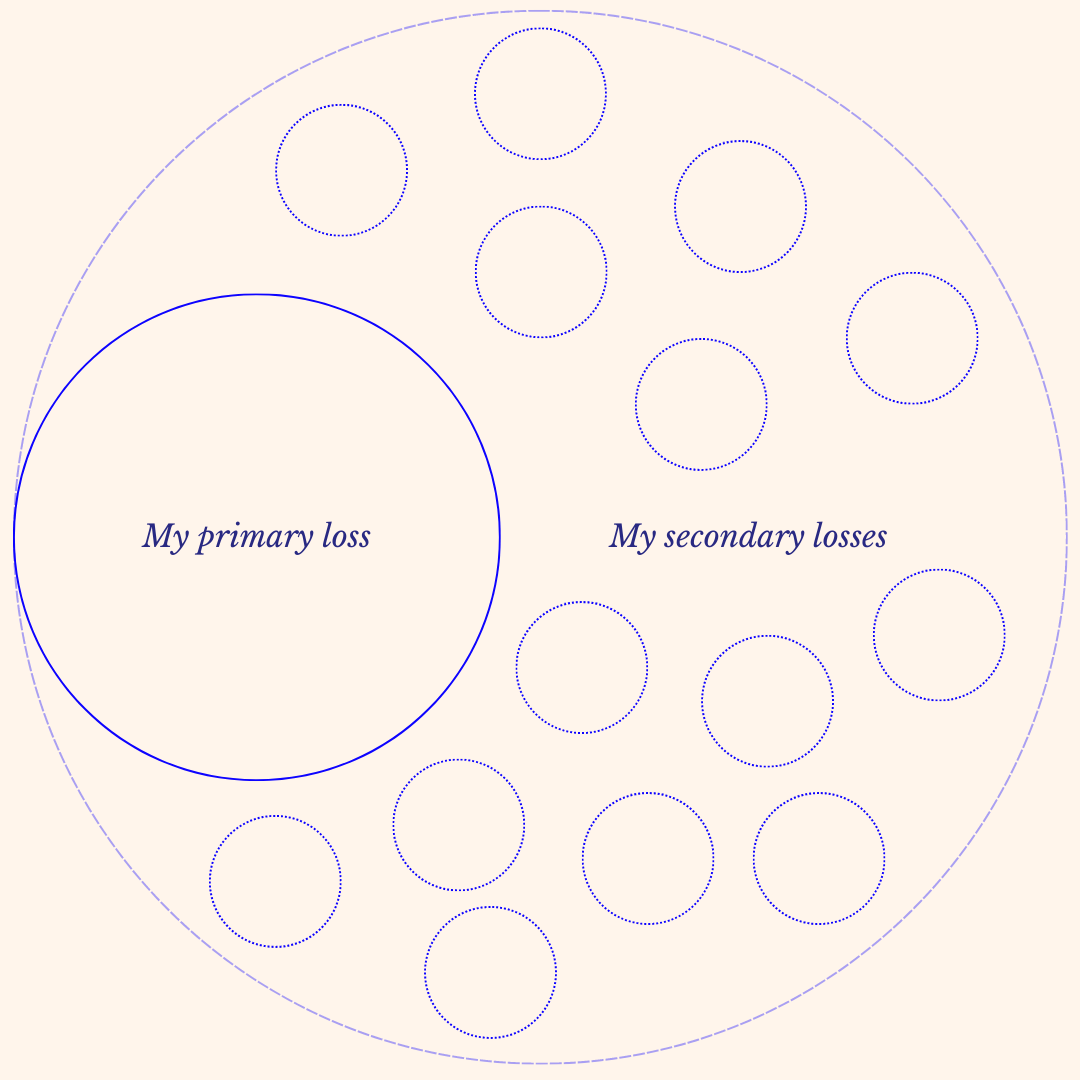Section 2: Two types of loss | How to process loss and grief
GUIDE NOTES: This mini guide – published as a blog series – is not a complete, concise work on everything pertaining to grief and loss. It is intended to be an introduction to support you in processing your grief and loss. Its aim is to provide some structure to this vast and topic. I’ll attempt to simplify a complex genre of work, and demystify what may be puzzling you.
Every section features a related journaling/ reflection prompt. Some sections contain exercises.
My advice is to work through the guide in chronological order, as each section builds upon the previous. Be sure to take your time; go at your own pace. Grief is heavy; it’s OK to put it down.
LET’S RECAP: In the last section (Section 1), we looked at four key terms: grief, loss, bereavement and mourning.
If you haven’t done so yet, it might be useful to review your notes as a mental refresher.
In this section, we’ll specifically be focusing on loss: the state of lack or deprivation of something or someone we consider significant and meaningful to us.
WHAT ARE THE TWO TYPES OF LOSS?
The two types of loss to distinguish are:
Primary loss;
Secondary loss.
Primary loss is a significant loss event, for example a death, illness, or the end of a job.
Secondary losses are consequential to the primary loss. In other words, a series of smaller, yet profound losses in the aftermath of the main event.
They are person-specific. What one individuals might perceive as a secondary loss, another may not.
Secondary losses could be based on the context in which the primary loss is experienced. Another individual may overlook or not recognise the secondary loss as such.
Secondary losses can be physical and tangible or symbolic and abstract.
For example:
Money
Home
Purpose
Self-esteem and confidence
Knowledge
Connection
Routine
Status
Identity
It’s particularly important to identify secondary losses because they reveal personal and private meanings we attach to our loss. They can uncover potential issues and reveal what we might struggle with the most in our grief.
Secondary losses compound and are often unforeseen.
Each perceived secondary loss requires its own grief response. That’s why grief feels so heavy and overwhelming – we’re grieving our primary loss, in addition to all our secondary losses.
Not all secondary losses present immediately; some, years down the line for example, a Western bride whose father died when she was a child, may also experience loss of tradition when it comes to being walked down the isle or the father-daughter dance at the reception.
Below are some more examples of secondary losses.
SECTION 2 – EXERCISE: MY SECONDARY LOSSES
This visual exercise is designed to assist you in recognising all the additional grief you’re bearing.
Taking a look at the losses you identified from the first section, select three primary losses you’re most drawn to.
Reflect on your secondary losses for each.
You can use the template above as a guide, but feel free to complete this exercise in whatever format you prefer: this could be a list, or a mind map, for example.
Though I’ve offered examples of secondary losses, be sure to add your own distinct examples. Remember that our experiences have nuance and many of our secondary losses are highly personal. Everyone’s lived loss and grief is unique.
Now, using two different colours, shade the tangible and physical losses, respectively. What do you notice?
Here are two reflection prompts to consider:
In what ways are my secondary losses interconnected?
Which of my secondary losses feel the most prominent and why?
SECTION 2 – JOURNALING AND REFLECTION PROMPTS
Who was I before my loss?
Who am I now?
Who do I wish to be beyond my suffering?
Loss and grief remaps our view of the world. Our new world demands a new version of ourself. We’ll think differently, see differently and feel differently.
Our confidence and self-esteem may be ruptured. Our feelings of inadequacy might make it difficult for us to still see ourself as whole. Our sense of Self is distorted and warped.
The first letter in Identity is ‘I’. The ‘I’ we were is not the ‘I’ we are now and is not the ‘I’ we will be.
Much of our healing entails finding our new place in an unfamiliar world; a reconstructed inner and outer landscape; an emerging identity.
CLOSING NOTE: This section was deeper than the last, so before resuming everyday life, don’t forget to prioritise aftercare as a form of self-care. See you in Section 3.
Disclaimer: This post is intended to provide its readers with accessible educational information, tools and resources for grief work. It is not a substitute for professional support. The author believes information contained within this guide to be accurate, and is not responsible for any errors or omissions.





